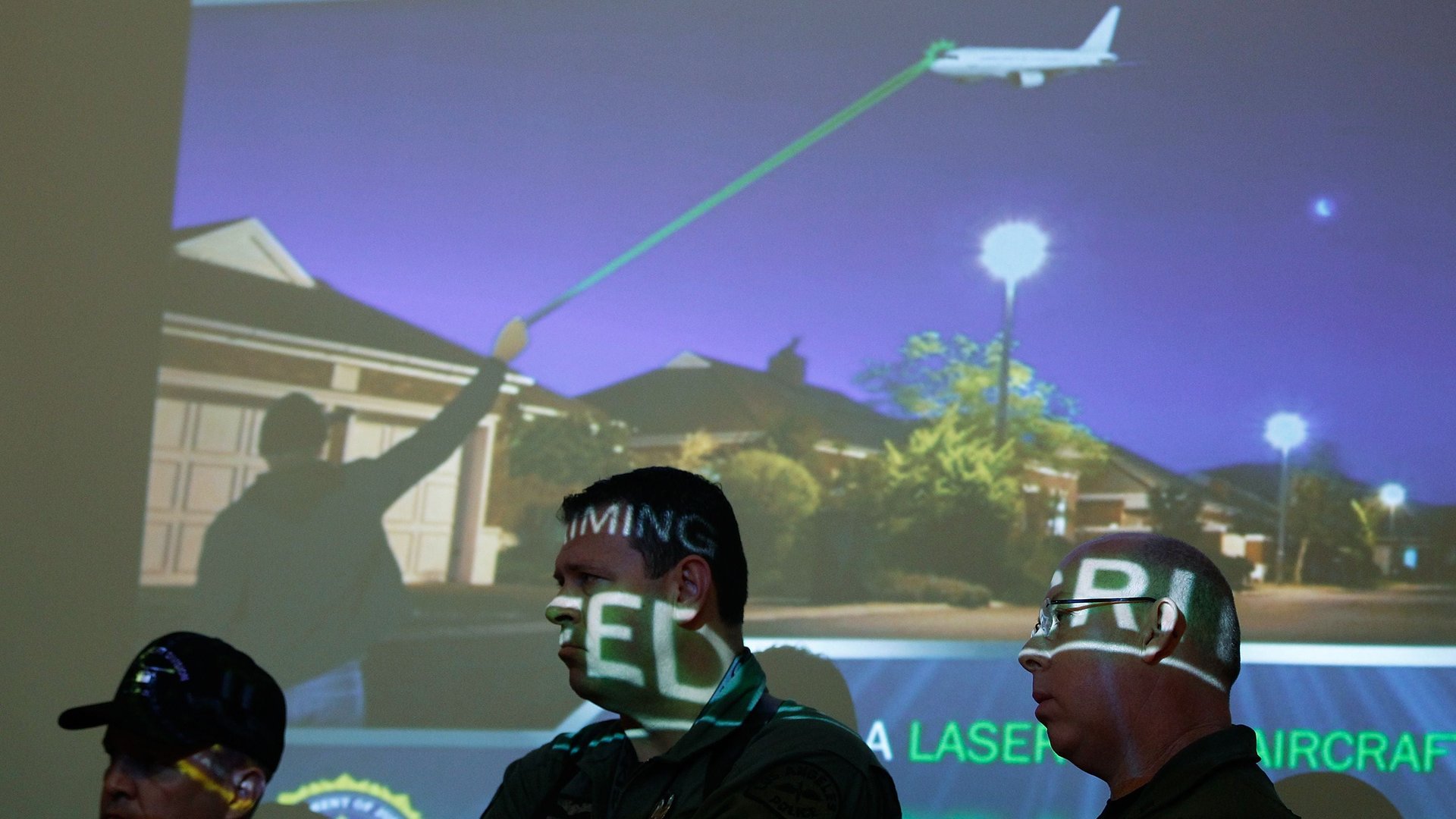People keep shining laser pointers at planes, and it needs to stop
Most of the time laser pointers, those dreaded tools of classrooms and conference rooms, seem relatively innocuous, if irritating. But the light from a laser can travel more than a mile, and when pointed through the plexiglass of a cockpit it can magnify into a blinding, vivid burst—the last thing one wants to see while piloting a plane full of passengers at hundreds of miles per hour.


Most of the time laser pointers, those dreaded tools of classrooms and conference rooms, seem relatively innocuous, if irritating. But the light from a laser can travel more than a mile, and when pointed through the plexiglass of a cockpit it can magnify into a blinding, vivid burst—the last thing one wants to see while piloting a plane full of passengers at hundreds of miles per hour.
Pilots who’ve experienced the effect of a laser pointer hitting the cockpit “have described them as the equivalent of a camera flash going off in a pitch black car at night,” according to a page on laser safety from the Transportation Security Administration.
And yet the practice is so common that on most days you can find news stories detailing the latest incidents. Just a few weeks ago, for instance, a dozen separate planes flying over the Newark, New Jersey, area reported laser-pointer incidents in a single night.
Last year people in the US thought it would be a good idea to shine a laser pointer at a plane at least 3,894 times. That’s more than 10 incidents per day, and those are just the ones reported to the Federal Aviation Administration (FAA). Those people probably did it as a goof, as many do at soccer and American football games. But the stakes are different when a plane is involved. Laser pointers can seriously disorient and blind pilots, endangering them, their passengers, and people on ground.
And despite it being a well-known problem, people keep shining lasers at planes in increasing numbers.
Lasers appear brightest to planes when they’re close to the ground—in other words, during take off and landing. Those also happen to be the times when a plane is most at risk of a crash since its air speed is low, it needs to maneuver more to get on course, and there are more planes sharing the airspace.
Those periods are precisely when a pilot needs the greatest visibility and concentration, and it’s also when they’re most vulnerable to lasers.
To date there haven’t been any known incidents of planes crashing as a result of a laser pointer. But that doesn’t mean it can’t happen. And unfortunately, it may take a crash before people start taking the problem seriously, which is why in 2012 US President Obama signed a bill that made aiming a laser pointer at a plane a federal crime. The penalty is up to five years in prison. There’s also a punishment of up to $11,000 in fines.
And these laws are being enforced. Last year a man was sentenced to 14 years in prison for using an extraordinarily strong laser on a police helicopter.
The FBI considers the risks so significant that it has a task force devoted to laser pointers, and it offers up to $10,000 for information leading to the arrest of anyone deliberately pointing a laser at an aircraft.